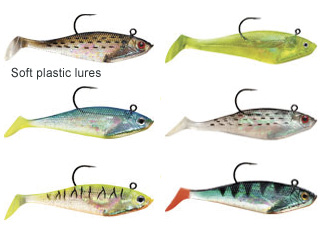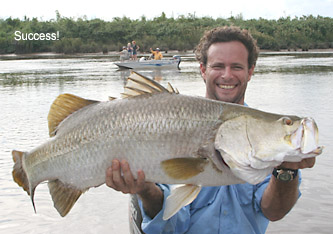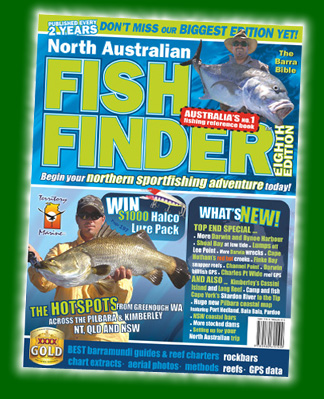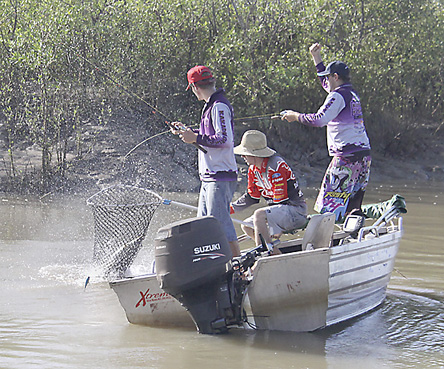Barramundi live in a great range of habitats and therefore fishing methods are varied. Most fishing takes place in the salt water and the NT’s tides have to be taken into account.
Barramundi fishing is usually best in early morning, late afternoon and at night. The best tide is usually the last three hours of runout and first two hours of run-in, when barramundi and bait are forced out of the mangroves and into mud drains and tidal flats.
The most popular way to catch barramundi is on lures. Some people use live bait to tempt them but this is considered unsporting by some.
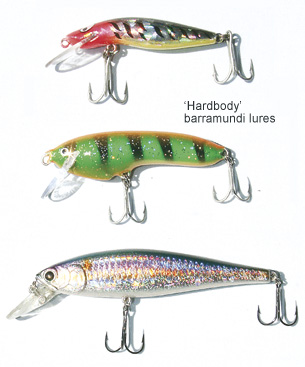
Lures are usually trolled or cast to likely places, which includes snags, rockbars, undercut river banks, and coastal flats where bait is being working by fish.
Lure colour and size are greatly debated but there is no doubt that some days barramundi will show preference for certain lures and colours. At times the fish will feed on a specific food item and a lure will need to imitate that item to get strikes.
Tiny lures can be useful at times, especially during the wet season run-off. Small prawn imitations are very effective in the saltwater as even large barramundi are voracious eaters of small prawns.
The main consideration is that the lures are strong – barramundi will literally tear apart lightly built lures. Fortunately there is a huge range of strong lures available specificially for barramundi fishing.
The soft plastic lures or "jellies" are very effective on barramundi. Click on the following link for more information about barramundi fishing lures.
